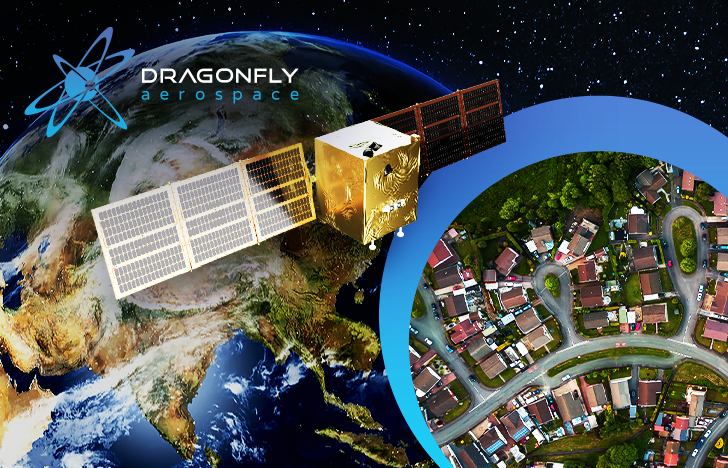
Dragonfly Aerospace recently introduced two new products to its lineup, marking a major step for the company to become a leader in the field of space imaging.
Dragonfly Aerospace now plans to release four satellites next year. Two new products join the lineup: µDragonfly Bus, the 100 kg class satellite for electro-optical imagers and the 200 kg class Dragonfly Bus satellite for taking on Synthetic Aperture Radar (SAR) payloads. Our long-term goal is to release up to 48 imaging satellites per year.
Let’s take a closer look at the payload components of the new products.
In this article, we will focus on SAR — synthetic aperture radar technology. These payloads will be delivered into orbit by the 200 kg class Dragonfly satellite bus.
SAR technology makes it possible to obtain highly detailed radar images of the surface during Earth observation, regardless of weather or light conditions.
The radar images are produced by scanning the surface with the antenna installed on the radar carrier, in a horizontal plane in real-beam mode. The high resolution is made possible by the large aperture size — the effective surface of the antenna, which has a regular amplitude-phase distribution with the same maximum value of the directional coefficient.
SAR is a type of radar that synthesizes a large aperture. Essentially, the synthesized aperture method is where the radar data obtained in each individual sounding period is stored together with the platform location data corresponding to those periods. All this data is stored for a specific time interval.
The distance the platform moves during this interval determines the size of the synthesized aperture. At the end of the interval, the data is processed as if it were collected with an antenna array with elements corresponding to the radar platform position during each of the sounding periods.
Synthetic aperture radar provides more precise spatial resolution compared to fixed beam scanning radars. SAR can be used to obtain both two-dimensional images and three-dimensional reconstructions of objects on the studied surface, allowing for detailed landscape research that can be successfully applied to agricultural or geological monitoring.
The 200 kg Dragonfly satellite bus is designed for precise surface imaging and surface resolution mapping.It is designed specifically for high-power payloads (such as SAR). The bus can carry payloads measuring 1x1m, and weighing up to 250 kg. The lifespan of this high performance satellite is 8 years.
